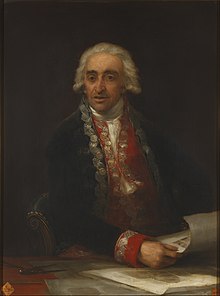| |||
|---|---|---|---|
| Buildings and structures +... |
The year 1811 in architecture involved some significant events.
Contents


| |||
|---|---|---|---|
| Buildings and structures +... |
The year 1811 in architecture involved some significant events.



Sir George Gilbert Scott, largely known as Sir Gilbert Scott, was a prolific English Gothic Revival architect, chiefly associated with the design, building and renovation of churches and cathedrals, although he started his career as a leading designer of workhouses. Over 800 buildings were designed or altered by him.

Sir Giles Gilbert Scott was a British architect known for his work on the New Bodleian Library, Cambridge University Library, Lady Margaret Hall, Oxford, Battersea Power Station, Liverpool Cathedral, and designing the iconic red telephone box.

John Nash was one of the foremost British architects of the Georgian and Regency eras, during which he was responsible for the design, in the neoclassical and picturesque styles, of many important areas of London. His designs were financed by the Prince Regent and by the era's most successful property developer, James Burton. Nash also collaborated extensively with Burton's son, Decimus Burton.

The Regency era of British history is commonly described as the years between c. 1795 and 1837, although the official regency for which it is named only spanned the years 1811 to 1820. King George III first suffered debilitating illness in the late 1780s, and relapsed into his final mental illness in 1810; by the Regency Act 1811, his eldest son George, Prince of Wales, was appointed prince regent to discharge royal functions. When George III died in 1820, the Prince Regent succeeded him as George IV. In terms of periodisation, the longer timespan is roughly the final third of the Georgian era (1714–1837), encompassing the last 25 years or so of George III's reign, including the official Regency, and the complete reigns of both George IV and his brother and successor William IV. It ends with the accession of Queen Victoria in June 1837 and is followed by the Victorian era (1837–1901).
This is a timeline of architecture, indexing the individual year in architecture pages. Notable events in architecture and related disciplines including structural engineering, landscape architecture, and city planning. One significant architectural achievement is listed for each year.
The year 1976 in architecture involved some significant architectural events and new buildings.
The year 1929 in architecture involved some significant architectural events and new buildings.
The year 1863 in architecture involved some significant architectural events and new buildings.
The year 1960 in architecture involved some significant architectural events and new buildings.
The year 1874 in architecture involved some significant architectural events and new buildings.
The year 1859 in architecture involved some significant architectural events and new buildings.
The year 1870 in architecture involved some significant architectural events and new buildings.
The year 1940 in architecture involved some significant architectural events and new buildings.
The year 1876 in architecture involved some significant architectural events and new buildings.
The year 1931 in architecture involved some significant events.
The year 1878 in architecture involved some significant events.
The year 1858 in architecture involved some significant events.
The year 1865 in architecture involved some significant architectural events and new buildings.
Events from the year 1811 in the United Kingdom. This is a census year and the start of the British Regency.

The statue of John Betjeman at St Pancras railway station, London is a depiction in bronze by the sculptor Martin Jennings. The statue was designed and cast in 2007 and was unveiled on 12 November 2007 by Betjeman's daughter, Candida Lycett Green and the then Poet Laureate Andrew Motion to commemorate Betjeman and mark the opening of St Pancras International as the London terminus of the Eurostar high-speed rail link between Great Britain and mainland Europe. The location memorialises the connection between St Pancras station and Betjeman, an early and lifelong advocate of Victorian architecture.